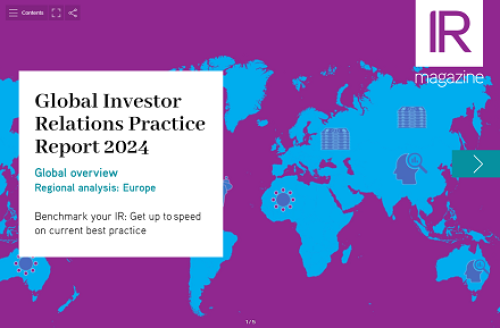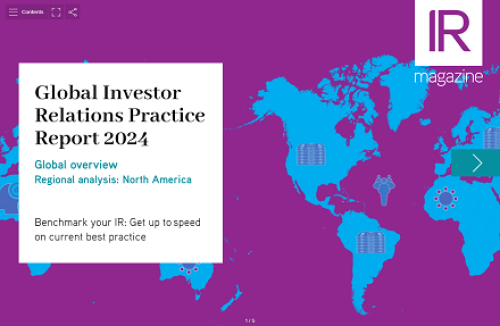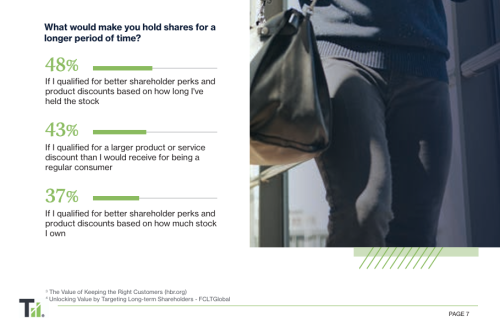Group meetings can be as useful as one-on-ones, says Gartmore’s senior investment manager
What kind of investment funds do you run?
We cover the whole of the UK market, mid-cap and above. We’re not specialists; we’re masters of looking at everything in the UK market. I think it’s good to have breadth rather than a complete focus on one sector.
What do you think is the most important quality of a good IR professional?
We meet a lot of companies and I think authority is one of the things we value the most – people who know and understand companies, who are really involved rather than just on the outside. You really can tell the difference with good IROs who are deeply involved with strategy and in the boardroom, rather than IROs who are just mouthpieces for companies.
Availability is another crucial factor. We are the investors in the company and we like to know what’s going on, in good times as well as in bad. The worst possible thing for a fund manager is a vacuum of information, and that can be one of the negatives that certain IROs have allowed to happen in the past.
I think experience is also important, and I don’t just mean experience as in lots of years at a company, but experience in understanding what investors want. A great example is that we don’t always want to know the good things – we also need to know the bad things because we need to price them. Some IROs are very good at communicating the positives but not so good when it comes to the negatives. Equities are all about price and risk, and I think sometimes that can get lost.
What do you want a CFO to contribute?
Authority on information. A chief financial officer is in charge of the financial accounts of the company. Having absolute trust in the CFO’s ability to understand the numbers, know the numbers and appreciate the numbers is a top priority. Second is communication. Even though we are seasoned professional investors, we can’t understand the entire company and everything that goes with it; we need explanations. I think that good CFOs can explain complex data in a simple fashion.
Which kinds of meetings do you as an investor find most useful?
The most useful meetings are one-on-ones or engagement meetings. They don’t have to be one-on-ones, however. I think there is a perception in the investor community that having one-on-one meetings is very significant. It’s a kind of macho thing: we get a one-on-one meeting while other investors just have a lunch meeting. That’s not important.
I think what you get out of each meeting is more important and sometimes it’s better to meet a company with other investors present to see what those other investors are concerned about.
We are a group of investors that make a stock market, so it’s not always a case of what your concerns are that will make or drive the share price; it’s the amalgam of everything. Some of the best meetings we have are lunch meetings or conference calls when you can see that 75 percent of the questions are on the pension deficit or some other issue that perhaps you didn’t think was so important.
That said, I think investor days are very good. It’s great to see under the roof of a company, to see who works at the company apart from the CEO, CFO and IRO, who the divisional managers are, who the enthusiastic, talented people who are really driving the business are. And that’s something that can be missed, especially on the equity side when we only see two or three people from an organization.
Now the market crisis has passed, are companies starting to open up?
In terms of transparency, I think companies are back on the front foot, seeing people again. They can’t give us all the information, but then they never could. They can’t tell us everything we want to know, but they can give us confidence that they at least have the tools at their disposal to cope with certain situations.
Do you think some sectors are better at IR than others?
I think it’s a company-by-company decision. We’ve seen IROs who are very good in sectors that have no visibility; they can at least give the investment community tools to price that lack of visibility.
The best example is the mining sector. It’s very difficult to know in the short term what the results are going to be. But we know where the assets are, we know that they’re going to be around for 50 years, and we know they have some value. It’s up to us to go and price them. We know the next six months might be quite poor, but that shouldn’t really affect the 50-year net present value.
Is there anything you find particularly irritating about IROs?
I’m going to be polite on this one. I think in anything we have to realize that there are negatives as well as positives. We do sell shares as well as buy shares, but if we sell things it doesn’t mean we have a problem with the company. In fact, we might love a company, but if everybody else loves it the valuations become too high to ignore and then we’ll sell it.
I worry about rose-tinted glasses. We have to look at all issues in the company, not just the positive ones. Some of the irritation can be when only one kind of view comes out of a company. When that happens, our meetings can be more adversarial because we’re trying to understand all parts of a business, not just the positive bits.
In terms of guidance, what would you like to see from companies?
Guidance doesn’t always have to be numbers – I think that perception comes from the sell side always wanting numbers. We just want reassurance. Sometimes companies can be much too negative because they don’t want to be caught out.
But if they are always being too negative and giving low guidance, the market won’t believe them and it can then become very difficult for them to get back on track with investors. I think believability is such an important factor.
Quarterly numbers are something investors don’t normally want – we want greater transparency but we don’t necessarily need quarterly figures. It’s more about having confidence that the strategy the company uses is working.
Fund snapshot: Gartmore UK Growth Fund
Assets under management: £200 mn
Turnover: 198%
Number of stocks: 60
Smallest position: Collins Stewart
Largest position: Royal Dutch Shell
Top five holdings (by size): Royal Dutch Shell, GlaxoSmithKline, BP, HSBC, Rio Tinto
Top five holdings (active risk): Dana Petroleum, Intermediate Capital Group, Heritage Oil, Kazakhmys, Debenhams
Source: Gartmore










